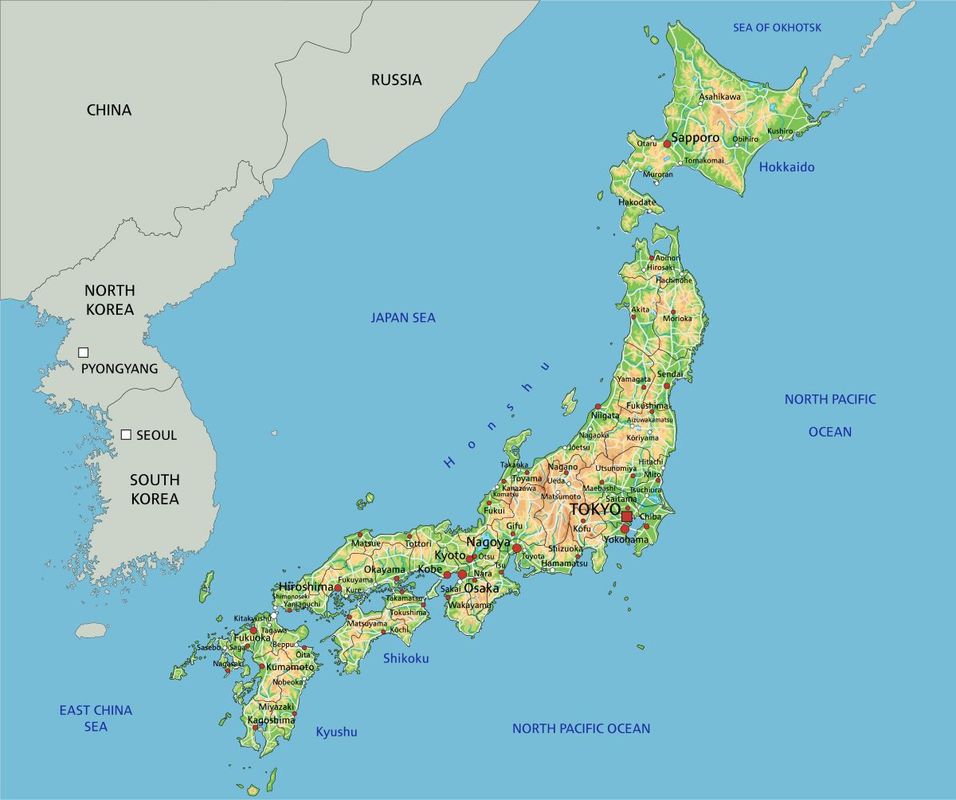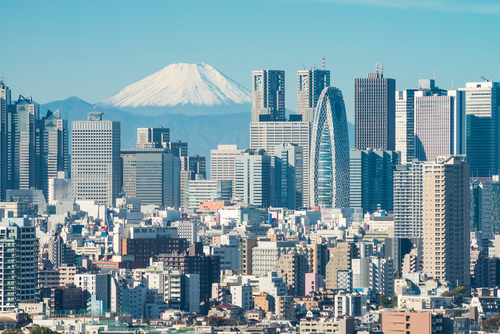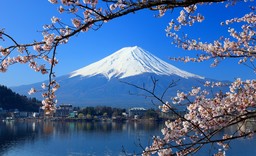26. Japan
Japan
Japan consists of four islands
The nation of Japan consists of four large islands.
The northernmost Japanese island, Hokkaido, experiences a climate similar to that of Northern Europe. The winter is snowy and cloudy, and the island is covered by coniferous forests.
The largest island, Honshu, is the location of many metropolises, such as the capital city of Tokyo. The famous Mount Fuji is located close to Tokyo.
The northernmost Japanese island, Hokkaido, experiences a climate similar to that of Northern Europe. The winter is snowy and cloudy, and the island is covered by coniferous forests.
The largest island, Honshu, is the location of many metropolises, such as the capital city of Tokyo. The famous Mount Fuji is located close to Tokyo.
The two southern islands are called Shikoku and Kyushu. Their climate is significantly warmer than in the other islands.
The four Japanese islands contain over 50 active volcanoes. Earthquakes are also common. This is due to the fact that Japan is located at the seam between two tectonic plates. These two plates move towards one another, resulting in volcanic activity and earthquakes.

Tokyo
 Tokyo is the capital city of Japan. The Tokyo metropolitan area consists of multiple cities that have become connected to one another as their populations have grown.
Tokyo is the capital city of Japan. The Tokyo metropolitan area consists of multiple cities that have become connected to one another as their populations have grown.The metropolitan area is one of the largest in the world. It is inhabited by over 40 million people.
Tokyo is the center of the Japanese economy and culture. The photograph on the right shows skyscrapers and the nearby Mount Fuji.
Japanese industry
Japan is one of the leading industrial nations in the world. Japanese car manufacturers, such as Toyota, Honda and Nissan, are known everywhere in the world. The Japanese electronics and entertainment industry is also well-known, as exemplified by companies such as Sony, Nintendo and Panasonic.
The Japanese bedrock is not rich in valuable minerals. The Japanese industry is dependent on imported raw materials and energy. Despite this, Japan has grown into one of the most significant industrial nations in the world. This is the result of effective industrial methods and a focus on innovations.
The Japanese bedrock is not rich in valuable minerals. The Japanese industry is dependent on imported raw materials and energy. Despite this, Japan has grown into one of the most significant industrial nations in the world. This is the result of effective industrial methods and a focus on innovations.
Japan is located next to the Pacific Ocean
The Pacific Ocean is the largest ocean on the planet. It is located east of Japan.
The Japanese shores are shallow, but the sea becomes deeper when moving away from the islands.
The sea continues to be an important source of food and livelihoods for the Japanese people. The Japanese fishing industry provides plenty of food for the demands of the nation's large population.
Seafood is an important part of Japanese cuisine, as exemplified by many traditional Japanese foods, such as sushi (pictured on the right).
The Japanese shores are shallow, but the sea becomes deeper when moving away from the islands.
The sea continues to be an important source of food and livelihoods for the Japanese people. The Japanese fishing industry provides plenty of food for the demands of the nation's large population.
Seafood is an important part of Japanese cuisine, as exemplified by many traditional Japanese foods, such as sushi (pictured on the right).
Photographs from Japan
Terminology
| Term | Explanation |
|---|---|
| industrial nation | A nation that bases its economy on industrial production. |











